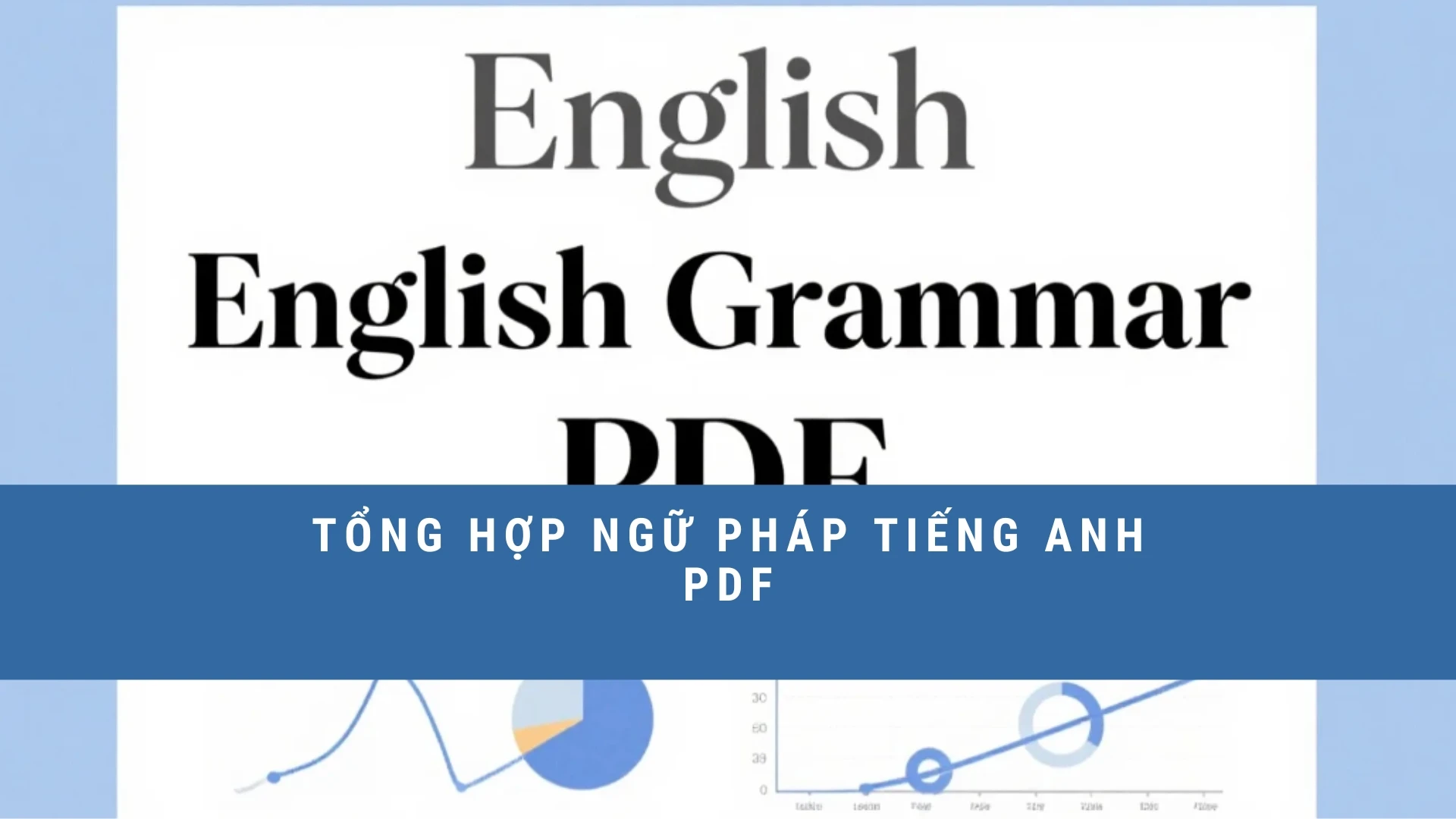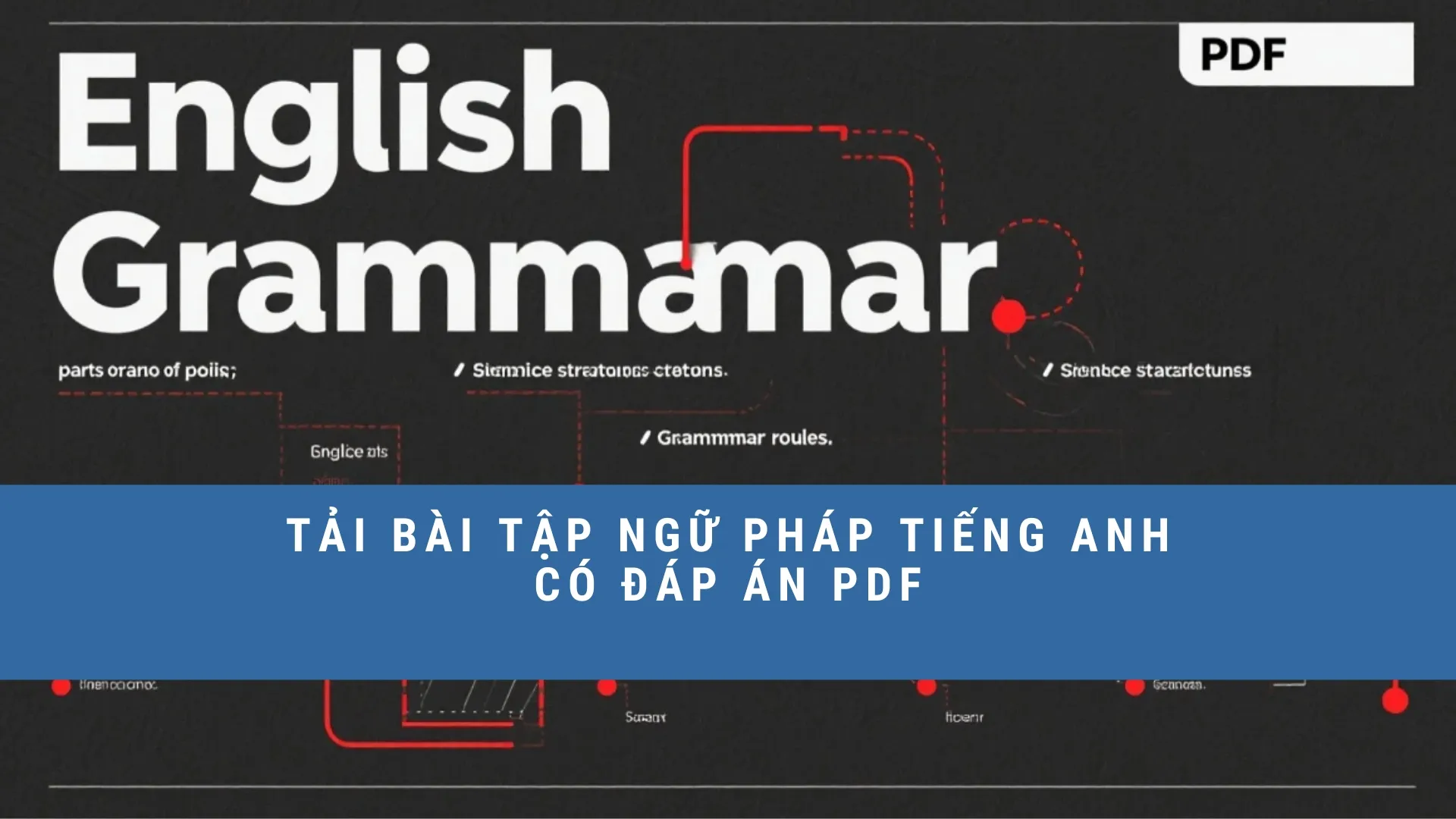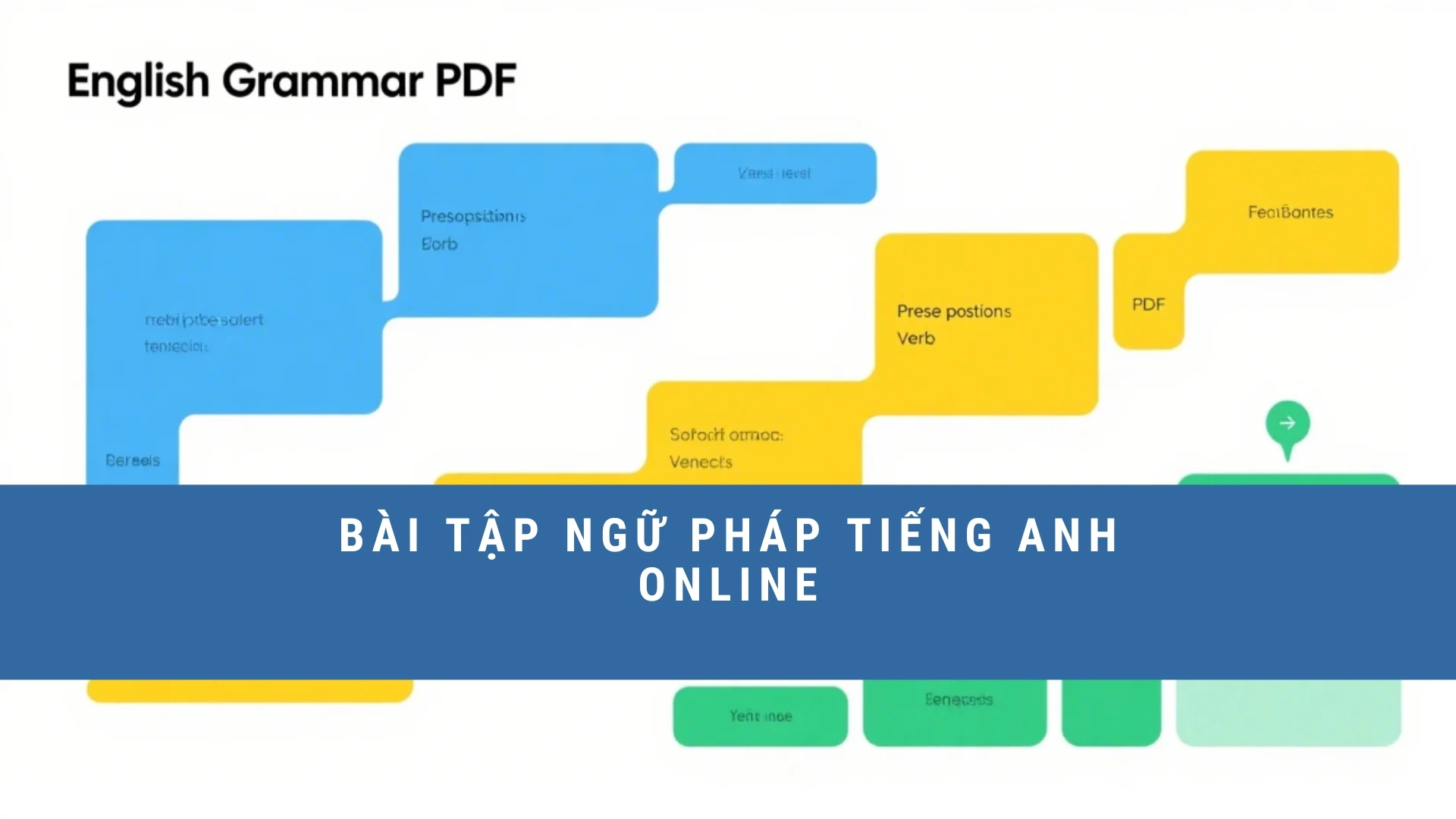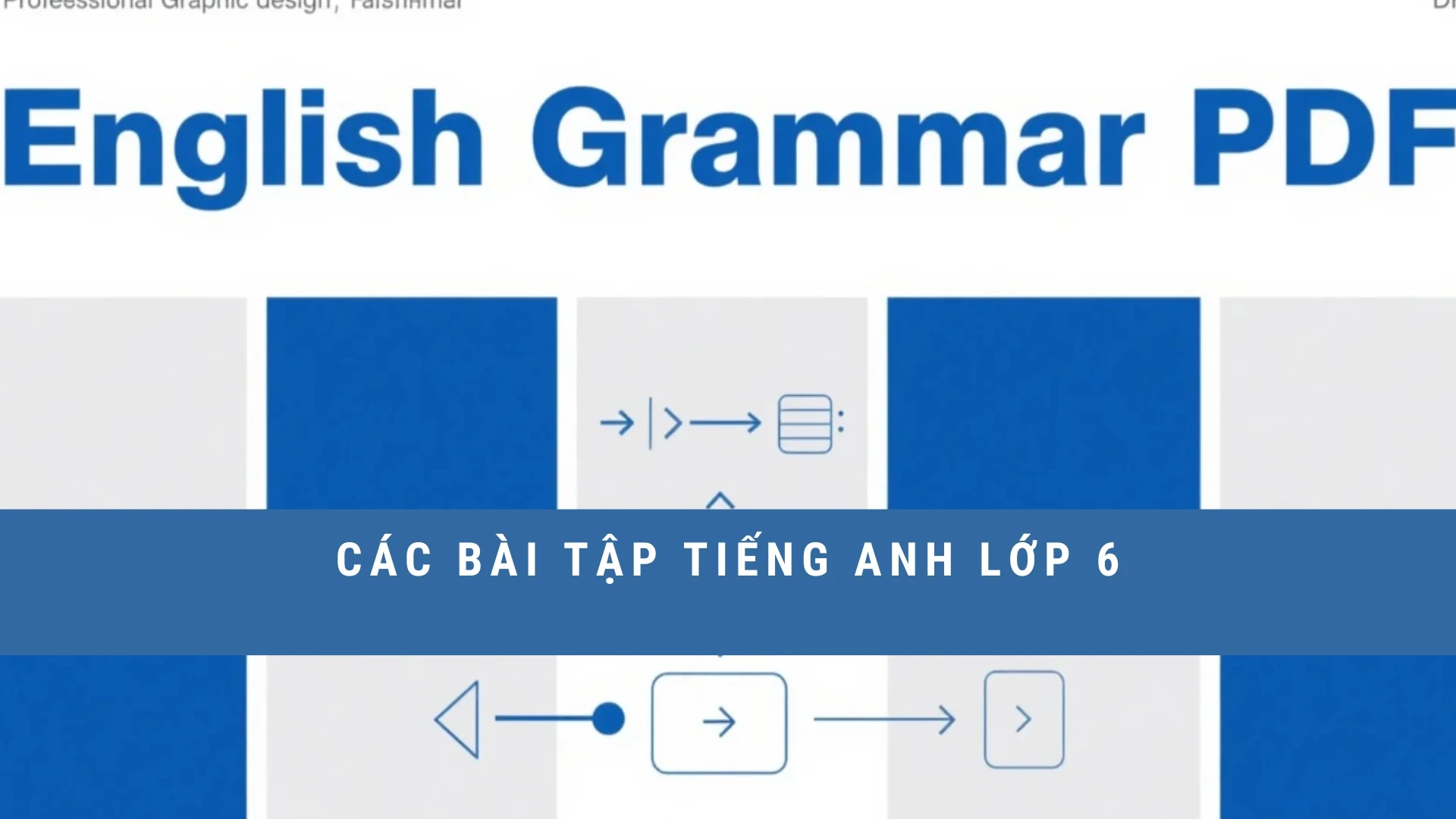Bài viết này giới thiệu 100 từ vựng và cụm từ tiếng Anh chuyên ngành Quản lý rủi ro tín dụng, giúp người đọc nắm vững các thuật ngữ quan trọng trong lĩnh vực tài chính. Từ vựng bao gồm các khái niệm về đánh giá rủi ro, quản lý tín dụng, và chiến lược giảm thiểu tổn thất, hỗ trợ học tập và làm việc hiệu quả.
Từ vựng nghề Quản lí rủi ro tín dụng
- Credit Risk – The risk of loss due to a borrower’s failure to repay a loan.
- Credit Assessment – The process of evaluating a borrower’s creditworthiness.
- Credit Score – A numerical representation of a borrower’s creditworthiness.
- Credit History – A record of a borrower’s past borrowing and repayment behavior.
- Default Risk – The risk that a borrower will not be able to meet their debt obligations.
- Credit Limit – The maximum amount of credit that a lender extends to a borrower.
- Credit Exposure – The total amount of credit a lender has extended to a borrower.
- Collateral – An asset pledged by a borrower to secure a loan.
- Credit Rating – An assessment of the creditworthiness of a borrower or a debt instrument.
- Loan-to-Value Ratio – A ratio used to assess the risk of a loan by comparing the loan amount to the value of the collateral.
- Credit Default Swap – A financial derivative used to manage credit risk by transferring credit exposure.
- Credit Portfolio – A collection of credit assets held by a lender or investor.
- Risk Management – The process of identifying, assessing, and mitigating risks.
- Credit Analysis – The evaluation of a borrower’s creditworthiness and risk level.
- Exposure at Default – The total amount a lender is exposed to at the time of borrower default.
- Loss Given Default – The portion of an exposure that is lost when a borrower defaults.
- Probability of Default – The likelihood that a borrower will default on a loan.
- Risk-Based Pricing – Pricing loans based on the level of credit risk associated with the borrower.
- Credit Risk Mitigation – Strategies to reduce the risk of credit losses.
- Credit Risk Modeling – The use of statistical models to estimate credit risk.
- Credit Limits Management – The process of setting and monitoring credit limits for borrowers.
- Credit Risk Policy – A set of guidelines for managing credit risk within an organization.
- Credit Risk Framework – The overall structure and strategy for managing credit risk.
- Debt-to-Income Ratio – A measure of a borrower’s ability to repay debt based on their income and debt levels.
- Credit Risk Assessment – The evaluation of potential credit risks associated with lending decisions.
- Credit Risk Measurement – The process of quantifying the level of credit risk.
- Credit Risk Control – The implementation of measures to manage and reduce credit risk.
- Credit Risk Management Strategy – A plan for managing and mitigating credit risk.
- Credit Risk Exposure – The amount of risk a lender is exposed to due to credit activities.
- Credit Risk Limits – The maximum amount of credit risk an organization is willing to take.
- Credit Risk Modeling Techniques – Methods used to model and predict credit risk.
- Risk-Adjusted Return – The return on an investment adjusted for its credit risk.
- Credit Risk Quantification – The process of measuring and expressing credit risk in quantitative terms.
- Credit Risk Analytics – The use of data analysis techniques to assess and manage credit risk.
- Counterparty Risk – The risk that the counterparty to a financial transaction may default.
- Credit Risk Assessment Tools – Tools and software used to assess credit risk.
- Risk-Based Capital – Capital required to cover potential losses due to credit risk.
- Credit Risk Indicators – Metrics used to monitor and assess credit risk.
- Credit Risk Report – A document summarizing credit risk exposures and mitigation efforts.
- Credit Risk Benchmarking – Comparing credit risk metrics to industry standards.
- Credit Risk Tolerance – The level of credit risk an organization is willing to accept.
- Credit Risk Review – An evaluation of credit risk management practices and exposures.
- Credit Risk Transfer – The process of shifting credit risk to another party.
- Securitization – The process of pooling credit assets and selling them as securities.
- Credit Risk Adjustment – Modifying credit terms to account for the level of risk.
- Credit Risk Assessment Criteria – Standards used to evaluate credit risk.
- Credit Risk Control Measures – Strategies and actions to manage credit risk.
- Credit Risk Monitoring – Ongoing surveillance of credit exposures and risk levels.
- Risk Mitigation Strategies – Methods used to reduce or manage risk.
- Credit Risk Exposure Limits – Maximum allowable credit exposures for borrowers.
- Risk Management Framework – A structured approach to managing and mitigating risks.
- Credit Risk Management Policy – Guidelines for handling credit risk within an organization.
- Risk Assessment Methodology – The approach used to assess and quantify risk.
- Credit Risk Management Practices – Techniques and procedures for managing credit risk.
- Default Probability Models – Statistical models used to estimate the likelihood of default.
- Credit Risk Assessment Models – Tools and techniques used to evaluate credit risk.
- Credit Risk Exposure Assessment – Evaluating the extent of exposure to credit risk.
- Collateral Management – The process of managing and valuing collateral assets.
- Credit Risk Mitigation Techniques – Methods used to reduce the impact of credit risk.
- Credit Risk Portfolio Management – Managing a portfolio of credit assets to balance risk and return.
- Credit Risk Strategy – A plan for addressing and managing credit risk.
- Credit Risk Assessment Framework – A structured approach to evaluating credit risk.
- Credit Risk Quantitative Analysis – Using quantitative methods to analyze credit risk.
- Risk-Based Credit Limits – Setting credit limits based on the level of risk.
- Credit Risk Monitoring Tools – Tools used to track and monitor credit risk.
- Risk-Based Credit Policies – Policies that adjust credit terms based on risk levels.
- Credit Risk Management Systems – Software and systems used to manage credit risk.
- Credit Risk Exposure Measurement – Quantifying the level of exposure to credit risk.
- Credit Risk Assessment Techniques – Methods used to evaluate creditworthiness.
- Credit Risk Management Framework – A comprehensive approach to managing credit risk.
- Credit Risk Forecasting – Predicting future credit risk levels and trends.
- Credit Risk Assessment Procedures – Steps and processes for assessing credit risk.
- Credit Risk Assessment Process – The sequence of activities involved in evaluating credit risk.
- Credit Risk Management Tools – Instruments used to manage and mitigate credit risk.
- Credit Risk Exposure Limits Management – Controlling and monitoring exposure limits for credit risk.
- Credit Risk Control Framework – The structure for implementing credit risk controls.
- Credit Risk Mitigation Strategies – Approaches used to mitigate the impact of credit risk.
- Credit Risk Reduction Techniques – Methods for reducing the level of credit risk.
- Credit Risk Management Practices – Best practices for managing credit risk.
- Credit Risk Assessment Guidelines – Rules and recommendations for evaluating credit risk.
- Credit Risk Management Procedures – Standard operating procedures for handling credit risk.
- Credit Risk Monitoring Systems – Systems used to continuously monitor credit risk.
- Credit Risk Exposure Analysis – Analyzing the extent of exposure to credit risk.
- Credit Risk Mitigation Measures – Specific actions taken to reduce credit risk.
- Credit Risk Management Tools and Techniques – Instruments and methods for managing credit risk.
- Credit Risk Assessment Methods – Approaches used to evaluate the risk of default.
- Credit Risk Framework Development – Creating a framework for managing credit risk.
- Credit Risk Quantification Techniques – Methods for measuring credit risk quantitatively.
- Credit Risk Management Guidelines – Recommendations for managing credit risk effectively.
- Credit Risk Analysis Procedures – Steps for analyzing credit risk.
- Credit Risk Exposure Management – Managing and controlling exposure to credit risk.
- Credit Risk Reporting – Communicating information about credit risk exposures and management.
- Credit Risk Evaluation Criteria – Standards used to evaluate the risk associated with credit.
- Credit Risk Monitoring Procedures – Procedures for tracking and managing credit risk.
- Credit Risk Management Policies and Procedures – Policies and procedures for handling credit risk.
- Credit Risk Management Controls – Mechanisms for controlling and reducing credit risk.
- Credit Risk Analysis Tools – Tools used to analyze and assess credit risk.
- Credit Risk Measurement Techniques – Methods for measuring the level of credit risk.
- Credit Risk Assessment Protocols – Protocols for evaluating credit risk.
- Credit Risk Management Framework Development – Developing a framework for managing credit risk effectively.
Bài viết sử dụng thuật ngữ trên
- Credit Risk: “Understanding credit risk is essential for managing potential losses from borrowers’ defaults.”
- Credit Assessment: “The bank’s credit assessment process involves evaluating a borrower’s financial history and ability to repay.”
- Credit Score: “A higher credit score generally indicates a lower risk of default on a loan.”
- Credit History: “The lender reviewed his credit history to determine his eligibility for a new mortgage.”
- Default Risk: “Default risk is the possibility that a borrower will fail to meet their debt obligations.”
- Credit Limit: “The credit limit on her card was increased based on her positive credit history.”
- Credit Exposure: “The company needs to manage its credit exposure to minimize potential financial losses.”
- Collateral: “The borrower pledged his property as collateral to secure the loan.”
- Credit Rating: “The agency upgraded the company’s credit rating following a successful financial restructuring.”
- Loan-to-Value Ratio: “The bank requires a loan-to-value ratio of no more than 80% for home mortgages.”
- Credit Default Swap: “Investors use credit default swaps to hedge against the risk of default on corporate bonds.”
- Credit Portfolio: “The financial institution’s credit portfolio includes various types of loans and credit facilities.”
- Risk Management: “Effective risk management strategies help in identifying and mitigating potential credit losses.”
- Credit Analysis: “Credit analysis involves assessing the financial health and creditworthiness of potential borrowers.”
- Exposure at Default: “Exposure at default represents the total amount the bank could lose if a borrower defaults.”
- Loss Given Default: “Loss given default is used to estimate the potential loss from a defaulted loan.”
- Probability of Default: “The probability of default helps in predicting the likelihood that a borrower will default.”
- Risk-Based Pricing: “Risk-based pricing adjusts the interest rate based on the borrower’s credit risk level.”
- Credit Risk Mitigation: “Credit risk mitigation strategies include using collateral and diversifying the credit portfolio.”
- Credit Risk Modeling: “Credit risk modeling helps in predicting potential credit losses using statistical methods.”
- Credit Limits Management: “Effective credit limits management ensures that borrowers do not exceed their approved credit limits.”
- Credit Risk Policy: “The credit risk policy outlines the guidelines for assessing and managing credit risks.”
- Credit Risk Framework: “A robust credit risk framework supports effective risk assessment and management practices.”
- Debt-to-Income Ratio: “The lender evaluates the debt-to-income ratio to determine a borrower’s ability to handle additional debt.”
- Credit Risk Assessment: “Credit risk assessment involves evaluating factors such as the borrower’s credit history and financial stability.”
- Credit Risk Measurement: “Credit risk measurement techniques help quantify the level of risk associated with lending activities.”
- Credit Risk Control: “Credit risk control measures include setting credit limits and monitoring borrower performance.”
- Credit Risk Management Strategy: “A comprehensive credit risk management strategy includes risk identification, assessment, and mitigation.”
- Credit Risk Exposure: “Monitoring credit risk exposure helps in managing the potential impact of borrower defaults.”
- Credit Risk Limits: “Credit risk limits are established to ensure that exposure to any single borrower does not exceed acceptable levels.”
- Credit Risk Modeling Techniques: “Credit risk modeling techniques include logistic regression and decision trees for predicting default probabilities.”
- Risk-Adjusted Return: “Risk-adjusted return accounts for the risk level associated with an investment, including credit risk.”
- Credit Risk Quantification: “Credit risk quantification involves measuring potential losses and estimating the impact on the portfolio.”
- Credit Risk Analytics: “Credit risk analytics uses data analysis to identify trends and patterns in credit risk.”
- Counterparty Risk: “Counterparty risk arises when the other party in a financial transaction defaults on their obligations.”
- Credit Risk Assessment Tools: “Credit risk assessment tools include software and models used to evaluate borrower creditworthiness.”
- Risk-Based Capital: “Risk-based capital requirements ensure that financial institutions hold sufficient capital to cover potential credit losses.”
- Credit Risk Indicators: “Credit risk indicators include metrics such as credit scores and default probabilities.”
- Credit Risk Report: “The credit risk report provides a summary of current credit exposures and risk management activities.”
- Credit Risk Benchmarking: “Credit risk benchmarking involves comparing the organization’s risk metrics to industry standards.”
- Credit Risk Tolerance: “Credit risk tolerance defines the level of risk an organization is willing to accept in its credit portfolio.”
- Credit Risk Review: “A credit risk review assesses the effectiveness of risk management practices and identifies areas for improvement.”
- Credit Risk Transfer: “Credit risk transfer involves shifting the risk of default to another party through instruments like credit default swaps.”
- Securitization: “Securitization involves pooling credit assets and selling them as securities to distribute risk.”
- Credit Risk Adjustment: “Credit risk adjustment modifies the terms of a loan based on the assessed level of risk.”
- Credit Risk Assessment Criteria: “Credit risk assessment criteria include financial ratios, credit history, and repayment capacity.”
- Credit Risk Control Measures: “Credit risk control measures include setting limits, using collateral, and diversifying the credit portfolio.”
- Credit Risk Monitoring: “Credit risk monitoring involves tracking the performance of credit assets and identifying early warning signs of default.”
- Risk Mitigation Strategies: “Risk mitigation strategies include implementing policies and practices to reduce the impact of credit risk.”
- Credit Risk Exposure Limits: “Credit risk exposure limits set boundaries on the amount of credit extended to any single borrower.”
- Risk Management Framework: “A risk management framework provides a structured approach to identifying, assessing, and controlling risks.”
- Credit Risk Management Policy: “The credit risk management policy outlines procedures for assessing and mitigating credit risks.”
- Risk Assessment Methodology: “The risk assessment methodology includes techniques for evaluating and quantifying potential risks.”
- Credit Risk Management Practices: “Credit risk management practices involve strategies for reducing and controlling credit exposure.”
- Default Probability Models: “Default probability models use statistical techniques to estimate the likelihood of borrower default.”
- Credit Risk Assessment Models: “Credit risk assessment models help predict the risk of default based on various borrower characteristics.”
- Credit Risk Exposure Assessment: “Credit risk exposure assessment involves evaluating the extent of potential losses due to borrower defaults.”
- Collateral Management: “Collateral management ensures that pledged assets are properly valued and monitored to secure loans.”
- Credit Risk Mitigation Techniques: “Credit risk mitigation techniques include diversifying the credit portfolio and requiring collateral.”
- Credit Risk Portfolio Management: “Credit risk portfolio management involves balancing risk and return across a portfolio of credit assets.”
- Credit Risk Strategy: “A credit risk strategy outlines the approach for managing credit exposures and mitigating potential losses.”
- Credit Risk Assessment Framework: “The credit risk assessment framework provides a structured approach for evaluating borrower risk.”
- Credit Risk Quantitative Analysis: “Credit risk quantitative analysis uses statistical methods to measure and assess credit risk.”
- Risk-Based Credit Limits: “Risk-based credit limits are set based on the borrower’s risk profile and creditworthiness.”
- Credit Risk Monitoring Tools: “Credit risk monitoring tools include software and systems used to track and manage credit risk.”
- Risk-Based Credit Policies: “Risk-based credit policies adjust lending terms based on the assessed risk level of borrowers.”
- Credit Risk Management Systems: “Credit risk management systems provide tools for tracking and analyzing credit risk exposures.”
- Credit Risk Exposure Measurement: “Credit risk exposure measurement quantifies the amount of risk associated with each credit exposure.”
- Credit Risk Assessment Techniques: “Credit risk assessment techniques include credit scoring and financial statement analysis.”
- Credit Risk Management Framework: “The credit risk management framework provides guidelines for identifying, assessing, and controlling credit risk.”
- Credit Risk Forecasting: “Credit risk forecasting predicts future credit risk levels based on historical data and market trends.”
- Credit Risk Assessment Procedures: “Credit risk assessment procedures involve steps for evaluating borrower creditworthiness and risk.”
- Credit Risk Assessment Process: “The credit risk assessment process includes evaluating financial statements, credit history, and repayment capacity.”
- Credit Risk Management Tools: “Credit risk management tools help in identifying, measuring, and managing credit risk.”
- Credit Risk Exposure Limits Management: “Credit risk exposure limits management involves setting and monitoring exposure limits to manage risk.”
- Credit Risk Control Framework: “The credit risk control framework outlines the controls and procedures for managing credit risk.”
- Credit Risk Mitigation Strategies: “Credit risk mitigation strategies include requiring collateral and diversifying credit exposures.”
- Credit Risk Reduction Techniques: “Credit risk reduction techniques aim to minimize potential losses from borrower defaults.”
- Credit Risk Management Practices: “Credit risk management practices include regular monitoring and evaluation of credit exposures.”
- Credit Risk Assessment Guidelines: “Credit risk assessment guidelines provide criteria for evaluating the risk associated with borrowers.”
- Credit Risk Management Procedures: “Credit risk management procedures outline the steps for assessing and controlling credit risk.”
- Credit Risk Monitoring Systems: “Credit risk monitoring systems are used to track and report on the risk level of credit exposures.”
- Credit Risk Exposure Analysis: “Credit risk exposure analysis involves evaluating the extent and potential impact of credit risk.”
- Credit Risk Mitigation Measures: “Credit risk mitigation measures include diversifying the credit portfolio and using credit insurance.”
- Credit Risk Management Tools and Techniques: “Credit risk management tools and techniques help in assessing and mitigating credit risk effectively.”
- Credit Risk Assessment Methods: “Credit risk assessment methods include analyzing credit scores and financial statements.”
- Credit Risk Framework Development: “Credit risk framework development involves creating a structured approach for managing credit risk.”
- Credit Risk Quantification Techniques: “Credit risk quantification techniques are used to measure the potential impact of credit risk on financial performance.”
- Credit Risk Management Guidelines: “Credit risk management guidelines provide best practices for managing and controlling credit risk.”
- Credit Risk Analysis Procedures: “Credit risk analysis procedures include steps for evaluating borrower creditworthiness and potential risk.”
- Credit Risk Exposure Management: “Credit risk exposure management involves controlling and limiting the amount of credit exposure to mitigate risk.”
- Credit Risk Reporting: “Credit risk reporting provides insights into the current level of credit risk and mitigation efforts.”
- Credit Risk Evaluation Criteria: “Credit risk evaluation criteria include financial health, credit history, and repayment ability.”
- Credit Risk Monitoring Procedures: “Credit risk monitoring procedures involve regularly reviewing and assessing credit exposures.”
- Credit Risk Management Policies and Procedures: “Credit risk management policies and procedures guide the effective management of credit risk.”
- Credit Risk Management Controls: “Credit risk management controls include setting limits and requiring collateral to manage risk.”
- Credit Risk Analysis Tools: “Credit risk analysis tools assist in evaluating and measuring the risk of credit losses.”
- Credit Risk Measurement Techniques: “Credit risk measurement techniques involve quantifying potential losses from borrower defaults.”
- Credit Risk Assessment Protocols: “Credit risk assessment protocols outline the methods and procedures for evaluating credit risk.”
- Credit Risk Management Framework Development: “Credit risk management framework development involves establishing a comprehensive system for managing credit risk.”
Bài tập
- Understanding _______ is essential for managing potential losses from borrowers’ defaults.
- The bank’s _______ process involves evaluating a borrower’s financial history and ability to repay.
- A higher _______ generally indicates a lower risk of default on a loan.
- The lender reviewed his _______ to determine his eligibility for a new mortgage.
- _______ is the possibility that a borrower will fail to meet their debt obligations.
- The _______ on her card was increased based on her positive credit history.
- The company needs to manage its _______ to minimize potential financial losses.
- The borrower pledged his property as _______ to secure the loan.
- The agency upgraded the company’s _______ following a successful financial restructuring.
- The bank requires a _______ ratio of no more than 80% for home mortgages.
- Investors use _______ to hedge against the risk of default on corporate bonds.
- The financial institution’s _______ includes various types of loans and credit facilities.
- Effective _______ strategies help in identifying and mitigating potential credit losses.
- _______ involves assessing the financial health and creditworthiness of potential borrowers.
- _______ represents the total amount the bank could lose if a borrower defaults.
- _______ is used to estimate the potential loss from a defaulted loan.
- The _______ helps in predicting the likelihood that a borrower will default on a loan.
- _______ adjusts the interest rate based on the borrower’s credit risk level.
- _______ strategies include using collateral and diversifying the credit portfolio.
- _______ helps in predicting potential credit losses using statistical methods.
- Effective _______ ensures that borrowers do not exceed their approved credit limits.
- The _______ outlines the guidelines for managing credit risk within an organization.
- A robust _______ supports effective risk assessment and management practices.
- The lender evaluates the _______ ratio to determine a borrower’s ability to handle additional debt.
- _______ involves evaluating factors such as the borrower’s credit history and financial stability.
- _______ techniques help quantify the level of credit risk.
- _______ measures include setting credit limits and monitoring borrower performance.
- A comprehensive _______ includes risk identification, assessment, and mitigation.
- Monitoring _______ helps in managing the potential impact of borrower defaults.
- _______ are established to ensure that exposure to any single borrower does not exceed acceptable levels.
- _______ include logistic regression and decision trees for predicting default probabilities.
- _______ accounts for the risk level associated with an investment, including credit risk.
- _______ involves measuring potential losses and estimating the impact on the portfolio.
- _______ uses data analysis to identify trends and patterns in credit risk.
- _______ arises when the other party in a financial transaction defaults on their obligations.
- _______ include software and models used to evaluate borrower creditworthiness.
- _______ requirements ensure that financial institutions hold sufficient capital to cover potential credit losses.
- _______ include metrics such as credit scores and default probabilities.
- The _______ provides a summary of current credit exposures and risk management activities.
- _______ involves comparing the organization’s risk metrics to industry standards.
- _______ defines the level of credit risk an organization is willing to accept.
- A _______ assesses the effectiveness of risk management practices and identifies areas for improvement.
- _______ involves shifting the risk of default to another party through instruments like credit default swaps.
- _______ involves pooling credit assets and selling them as securities to distribute risk.
- _______ modifies the terms of a loan based on the assessed level of risk.
- _______ include financial ratios, credit history, and repayment capacity.
- _______ include setting limits, using collateral, and diversifying the credit portfolio.
- _______ involves tracking the performance of credit assets and identifying early warning signs of default.
- _______ include implementing policies and practices to reduce the impact of credit risk.
- _______ set boundaries on the amount of credit extended to any single borrower.
- A _______ provides a structured approach to identifying, assessing, and controlling risks.
- The _______ outlines procedures for assessing and mitigating credit risks.
- The _______ includes techniques for evaluating and quantifying potential risks.
- _______ involve strategies for reducing and controlling credit exposure.
- _______ use statistical techniques to estimate the likelihood of borrower default.
- _______ help predict the risk of default based on various borrower characteristics.
- _______ involves evaluating the extent of potential losses due to borrower defaults.
- _______ ensures that pledged assets are properly valued and monitored to secure loans.
- _______ include diversifying the credit portfolio and requiring collateral.
- _______ involves balancing risk and return across a portfolio of credit assets.
- A _______ outlines the approach for managing credit exposures and mitigating potential losses.
- The _______ provides a structured approach for evaluating borrower risk.
- _______ uses statistical methods to measure and assess credit risk.
- _______ are set based on the borrower’s risk profile and creditworthiness.
- _______ include software and systems used to track and manage credit risk.
- _______ adjust lending terms based on the assessed risk level of borrowers.
- _______ provide tools for tracking and analyzing credit risk exposures.
- _______ quantifies the amount of risk associated with each credit exposure.
- _______ include credit scoring and financial statement analysis.
- The _______ provides guidelines for identifying, assessing, and controlling credit risk.
- _______ predicts future credit risk levels based on historical data and market trends.
- The _______ includes steps for evaluating borrower creditworthiness and risk.
- The _______ includes evaluating financial statements, credit history, and repayment capacity.
- _______ help in identifying, measuring, and managing credit risk.
- _______ involves setting and monitoring exposure limits to manage risk.
- The _______ outlines the controls and procedures for managing credit risk.
- _______ include requiring collateral and diversifying credit exposures.
- _______ aim to minimize potential losses from borrower defaults.
- _______ include regular monitoring and evaluation of credit exposures.
- _______ provide criteria for evaluating the risk associated with borrowers.
- _______ outline the steps for assessing and controlling credit risk.
- _______ are used to track and report on the risk level of credit exposures.
- _______ involves evaluating the extent and potential impact of credit risk.
- _______ include diversifying the credit portfolio and using credit insurance.
- _______ help in assessing and mitigating credit risk effectively.
- _______ include analyzing credit scores and financial statements.
- _______ involves creating a structured approach for managing credit risk.
- _______ are used to measure the potential impact of credit risk on financial performance.
- _______ provide best practices for managing and controlling credit risk.
- _______ include steps for evaluating borrower creditworthiness and potential risk.
- _______ involves controlling and limiting the amount of credit exposure to mitigate risk.
- _______ provides insights into the current level of credit risk and mitigation efforts.
- _______ include financial health, credit history, and repayment ability.
- _______ involve regularly reviewing and assessing credit exposures.
- _______ guide the effective management of credit risk.
- _______ include setting limits and requiring collateral to manage risk.
- _______ assist in evaluating and measuring the risk of credit losses.
- _______ involve quantifying the level of credit risk.
- _______ outline the methods and procedures for evaluating credit risk.
- _______ involves establishing a comprehensive system for managing credit risk effectively.
Đáp án
- Credit Risk
- Credit Assessment
- Credit Score
- Credit History
- Default Risk
- Credit Limit
- Credit Exposure
- Collateral
- Credit Rating
- Loan-to-Value Ratio
- Credit Default Swap
- Credit Portfolio
- Risk Management
- Credit Analysis
- Exposure at Default
- Loss Given Default
- Probability of Default
- Risk-Based Pricing
- Credit Risk Mitigation
- Credit Risk Modeling
- Credit Limits Management
- Credit Risk Policy
- Credit Risk Framework
- Debt-to-Income Ratio
- Credit Risk Assessment
- Credit Risk Measurement
- Credit Risk Control
- Credit Risk Management Strategy
- Credit Risk Exposure
- Credit Risk Limits
- Credit Risk Modeling Techniques
- Risk-Adjusted Return
- Credit Risk Quantification
- Credit Risk Analytics
- Counterparty Risk
- Credit Risk Assessment Tools
- Risk-Based Capital
- Credit Risk Indicators
- Credit Risk Report
- Credit Risk Benchmarking
- Credit Risk Tolerance
- Credit Risk Review
- Credit Risk Transfer
- Securitization
- Credit Risk Adjustment
- Credit Risk Assessment Criteria
- Credit Risk Control Measures
- Credit Risk Monitoring
- Risk Mitigation Strategies
- Credit Risk Exposure Limits
- Risk Management Framework
- Credit Risk Management Policy
- Risk Assessment Methodology
- Credit Risk Management Practices
- Default Probability Models
- Credit Risk Assessment Models
- Credit Risk Exposure Assessment
- Collateral Management
- Credit Risk Mitigation Techniques
- Credit Risk Portfolio Management
- Credit Risk Strategy
- Credit Risk Assessment Framework
- Credit Risk Quantitative Analysis
- Risk-Based Credit Limits
- Credit Risk Monitoring Tools
- Risk-Based Credit Policies
- Credit Risk Management Systems
- Credit Risk Exposure Measurement
- Credit Risk Assessment Techniques
- Credit Risk Management Framework
- Credit Risk Forecasting
- Credit Risk Assessment Procedures
- Credit Risk Assessment Process
- Credit Risk Management Tools
- Credit Risk Exposure Limits Management
- Credit Risk Control Framework
- Credit Risk Mitigation Strategies
- Credit Risk Reduction Techniques
- Credit Risk Management Practices
- Credit Risk Assessment Guidelines
- Credit Risk Management Procedures
- Credit Risk Monitoring Systems
- Credit Risk Exposure Analysis
- Credit Risk Mitigation Measures
- Credit Risk Management Tools and Techniques
- Credit Risk Assessment Methods
- Credit Risk Framework Development
- Credit Risk Quantification Techniques
- Credit Risk Management Guidelines
- Credit Risk Analysis Procedures
- Credit Risk Exposure Management
- Credit Risk Reporting
- Credit Risk Evaluation Criteria
- Credit Risk Monitoring Procedures
- Credit Risk Management Policies and Procedures
- Credit Risk Management Controls
- Credit Risk Analysis Tools
- Credit Risk Measurement Techniques
- Credit Risk Assessment Protocols
- Credit Risk Management Framework Development











